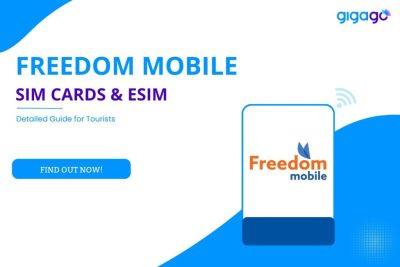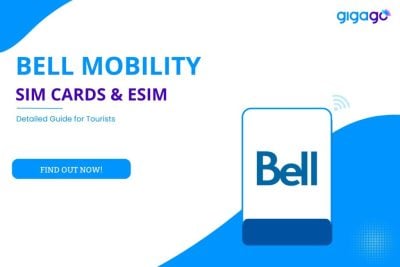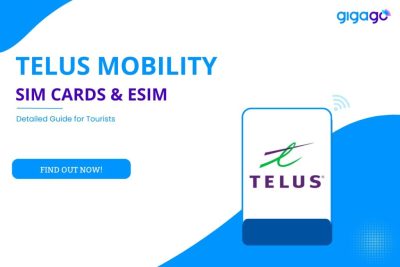. Data roaming in Canada is one of the ways to get online, and it is quite expensive. But do not worry! In this article, we will share everything about roaming services in Canada and other alternatives that you can use to be always connected while exploring this stunning country.
How To Use Cell Phone In Canada: Traveler’s Guide To Stay Connected
Traveling to Canada soon? Having an Internet connection is crucial and you should know how to stay connected and how to use cell phone in Canada. While cell service in Canada is generally decent, it may differ from what you are used to. Check out this guide to explore cellular service consumption and the different options in Canada that can keep you online.
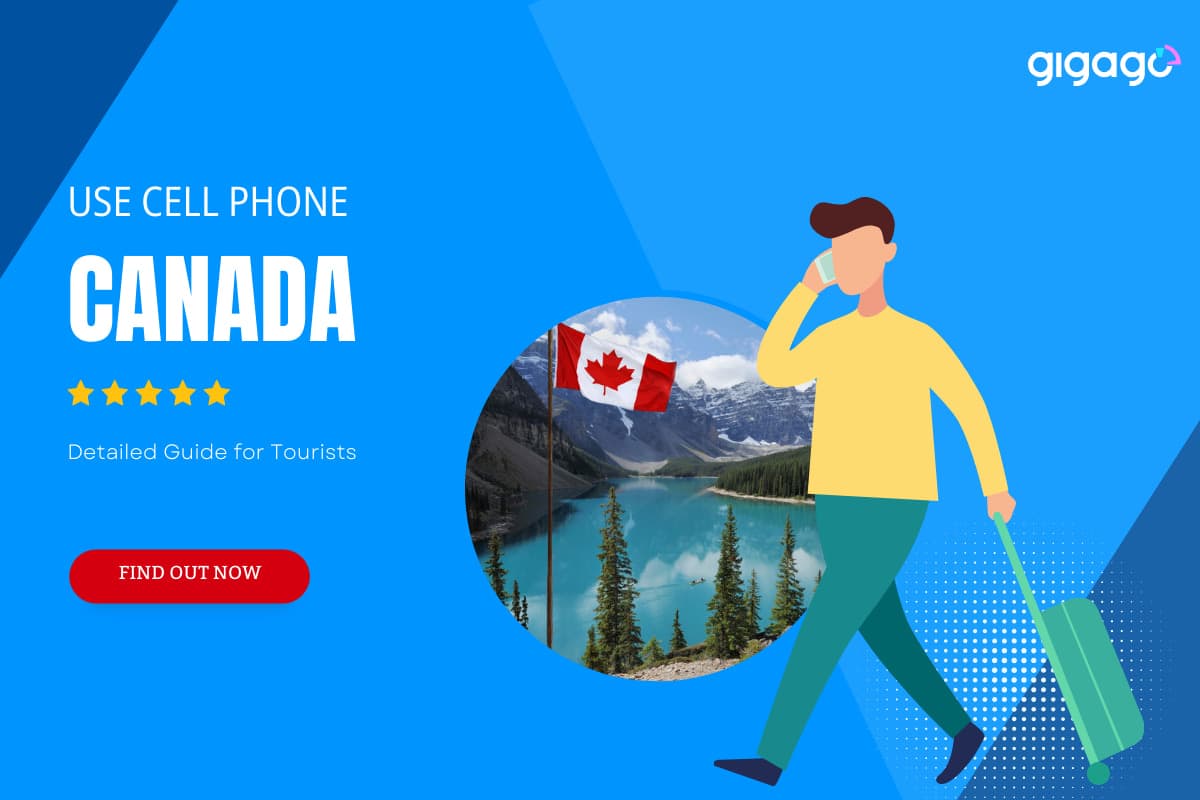
In this article
I. Highlights of Phone Compatibility, Frequencies, and Network in Canada
You should know about phone compatibility, frequencies, and networks in Canada for tourists so that you can have a smooth Internet connection when traveling in this North American country.
Phone compatibility:
- Canada uses GSM and LTE technology for mobile networks, which are compatible with most phones from the US, Europe, and so on.
- Make sure your phone is unlocked and works on the GSM/ UMTS networks.
Frequencies:
Main frequencies used in Canada: 700MHz, 850MHz, and 1900MHz for 3G (UMTS/HSPA).
LTE (4G) networks in Canada work on bands 4 (AWS), 7 (2600 MHz), and 13 (700 MHz).
Networks:
- Major mobile carriers in Canada are Bell, Telus, and Rogers. They all have great coverage across cities and most tourist areas.
- Smaller carriers like Freedom Mobile also operate well in certain regions.
- Prepaid SIM cards are available for purchase, providing flexibility during your stay.
Pro Tips:
- Check if your phone is unlocked before arriving in Canada.
- Confirm with your home carrier about international roaming options and rates.
II. Use Cell Phone in Canada – Will My Phone Work?

Yes. Definitely!
When you travel to Canada, you are still able to use your cell phone and connect to the Internet. Here are several things about your smartphone that you should confirm before your trip:
Verify that your cell phone has open bands. You can only connect to networks other than your operator’s network if they are open. Otherwise, you will be forced to use pricey international roaming.
Compare your cellular network frequencies to those used in Canada. This will help you determine how fast your Internet connection will be in Canada.
Here is a table of the specific bands and frequencies used by Canadian carriers:
| Frequency (MHz) | Band | |
| 5G Bands | 2600 | n7, n38 |
| 1700 | n66, n71 | |
| 3500 | n78 | |
| 4G Bands | 1900 | B2 |
| 700/2100 AWS 1 | B4 | |
| 850 | B5 | |
| 2600 | B7 | |
| 700 | B12, B13, B17, B29 | |
| TDD 900 | B46 | |
| 1700/2100 | B66 | |
| 600 | B71 | |
3G Bands | 1900 | B2 |
| 1700/2100 AWS A-F | B4 | |
| 850 | B5 | |
| 2G Bands | 1900 | B2 |
| 850 | B5 |
III. Do I Need an International Plan in Canada?
Yes. You need an international plan for your visit to Canada. This is a great way to access the Internet in Canada as international plans are generally affordable and secure. Many mobile internet services in Canada are offering international plans such as SIM cards, eSIMs, pocket Wifi, etc.

If you use the roaming services of your home operator, you will incur high costs. You may also use free Wifi to connect to the Internet. Though this option sounds quite convenient, you cannot rely on it. You cannot always go to hotels, restaurants, or coffee shops to find free Wifi. Furthermore, signals might be spotty and networks can become overcrowded.
IV. What are International Plan Options to Use Cellphones in Canada for Tourists?
Now that you know the different alternatives with which you can get an international plan in Canada. Let’s dive into the features, pros and cons, and where to purchase each of these options.
1. eSIM Plan for Canada
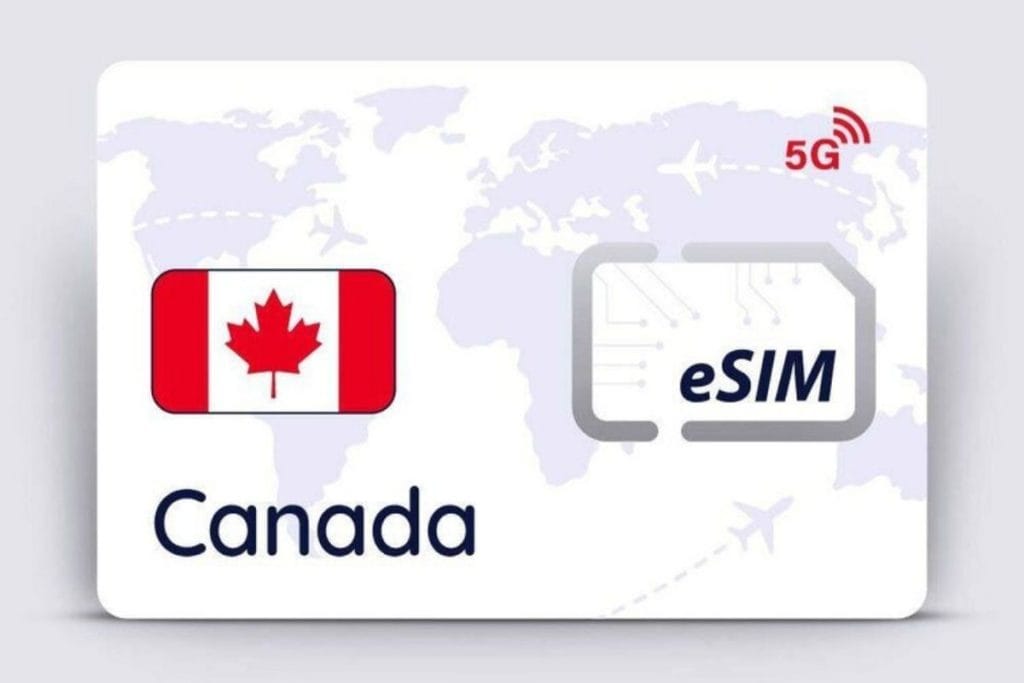
eSIM for Canada is an excellent option that has become popular among tourists due to its innovative features. eSIM is a digital SIM, so it is effortless to buy, activate, and utilize it virtually.
Suitable for: those who appreciate the convenience and have an eSIM-equipped mobile device
Where to buy eSIM for Canada: order online from carriers or trusted third-party providers
Pros: no physical SIM needed, no need to hunt for physical SIM card stores, easy purchase and activation
Cons: limited carrier options
Important note: Your smartphone needs to be eSIM-compatible to work with eSIM. See our up-to-date list of eSIM equipped devices.
2. International SIM card for Canada
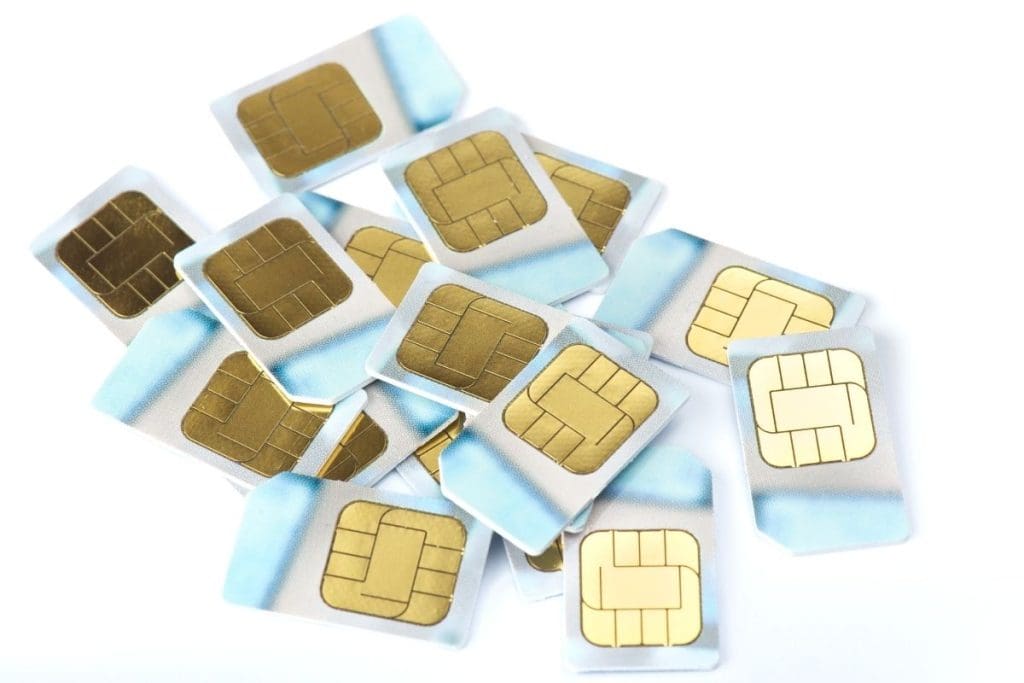
International Canada SIM cards may be a more familiar alternative for you. They function similarly to those you use at home. Most of them provide cellular data services. You need to insert the SIM card into your cell phone.
Suitable for: those with an unlocked smartphone
Where to buy SIM card for Canada: online from reliable third-party providers or major Canadian carriers before your trip or at the airport stores
Pros: affordable price, various data plans, access to a local Canadian number
Cons: risk of SIM loss or physical damage
3. Pocket WiFi

The Pocket Wifi is a small device that can connect multiple devices and can be carried with you. It shares a network signal with other devices connected to it.
Suitable for: those who want to share Internet among a family or group traveling together.
Where to buy Pocket WiFi for Canada: technology stores, rental websites, rental kiosks at airports
Pros: You can connect various devices such as cell phones, tablets, laptops, etc. to the same pocket Wifi
Cons: high rental rates, extra thing to carry
V. Will My Local Network Work in Canada?

Most likely possible.
Most local carriers offer users the possibility to utilize international roaming. However, the roaming charges, especially for Canada, are very high. Your daily usage might end up costing way more than expected. This is also considered the most expensive option of all.
If you are not careful tracking every little thing like your usage habit or your need, you will have to pay a lot of money after your trip. You could be spending $10-$15/ day for international roaming depending on the perks offered by your provider.
Pro Tip: To avoid stress and budget worries, you can get a prepaid Canadian SIM or an eSIM for the best deals and perks.
VI. Gigago Canada eSIM – An Alternative to Get Internet in Canada with your Cell Phone
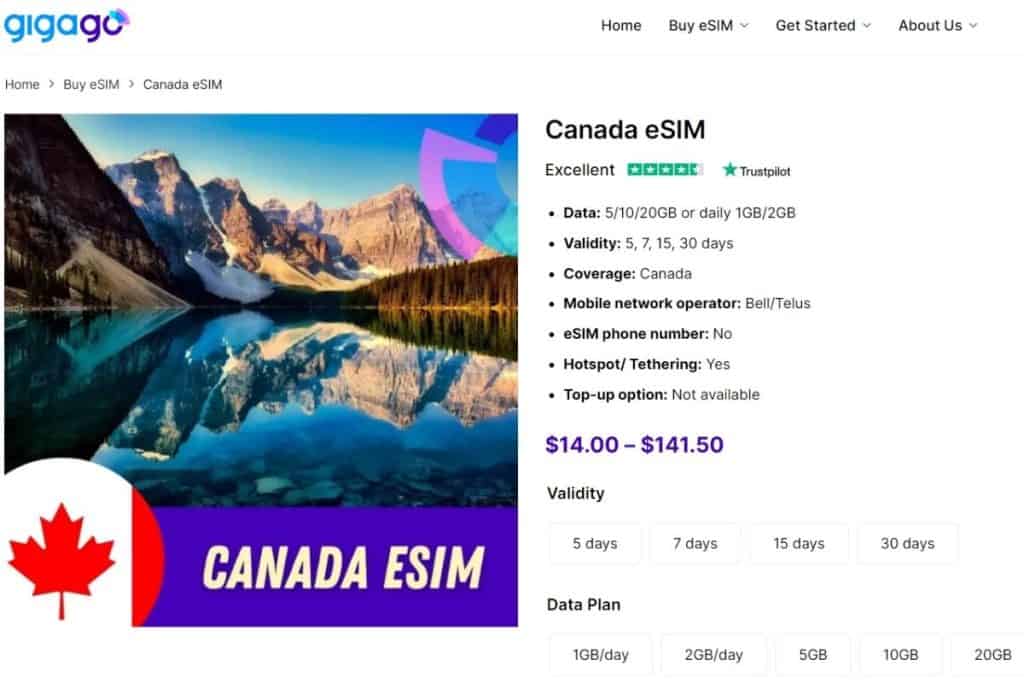
Of all the international plan options, eSIM is the best alternative to get Internet while traveling in Canada. With eSIM, you do not need to commute to SIM stores to buy it. All you need is to get it and activate it online before trip with the provider’s support. eSIM also offers diverse plans for you to choose from.
eSIM Canada from reputable providers like Gigago supports robust networks across Canada like Bell Mobility and Telus Mobility. You will always get coverage wherever you go. Gigago provides tourists with a wide selection of eSIM plans at competitive prices, and instant support in English, French, Japanese, etc.
Gigago offers multiple data plan options for Canada, starting from a 5-day plan with 1GB per day for $14 with $ 3.5 . They also have 7-day, 15-day, and 30-day plans ranging from 1GB to 20GB of total data, or 1GB to 2GB per day, with prices from $14 up to $141.50.
Important Note: Make sure your cell phone supports eSIM. Remember to choose the Canadian data package that best fits your needs and preferences.
VII. Extra Tips to Use Cell Phone in Canada
The following tips will help you use your cell phone in Canada securely and cost-effectively:
- Ask your provider about international roaming and any good deals they might have for Canada. Some offers can make calls/ texts to home cheaper than roaming fees.
- Downloading maps before your trip will help you find places even without data access.
- Consider a Canadian eSIM or physical SIM card. Then you will have affordable local rates for browsing, map navigation, and staying in touch.
- Most major cities have public free Wifi in spots like hotels, restaurants, coffee shops, etc. so you do not need to use up mobile data when casual browsing.
VIII. Conclusion
Now you know the international plan options to use cell phone in Canada. In general, you can use your phone when visiting Canada. However, it is advisable to use an eSIM or prepaid SIM card for Canada instead of international roaming for the best offers and the most affordable rates. Don’t forget to select the plan option that covers your travel needs.


